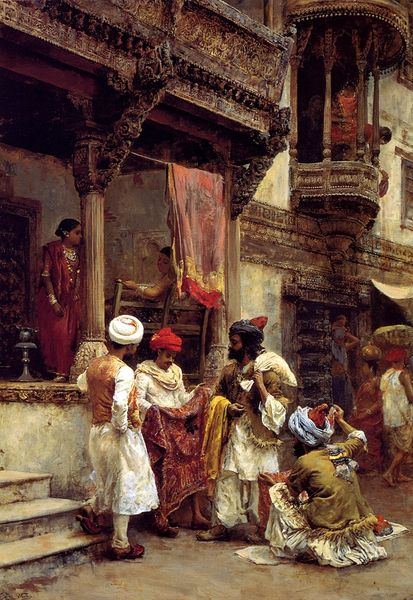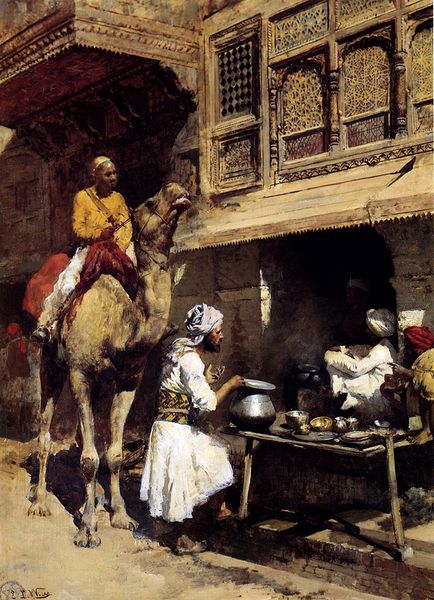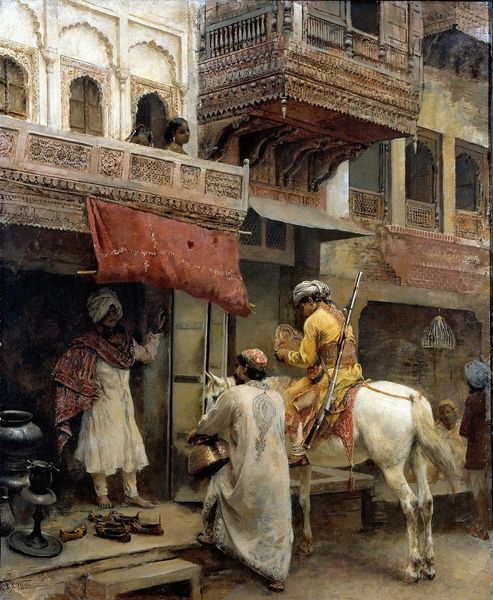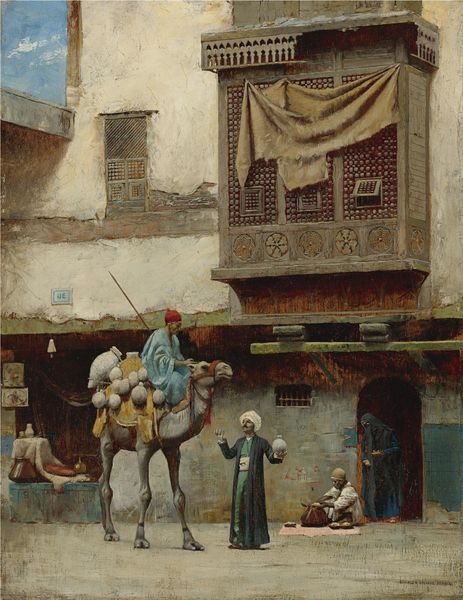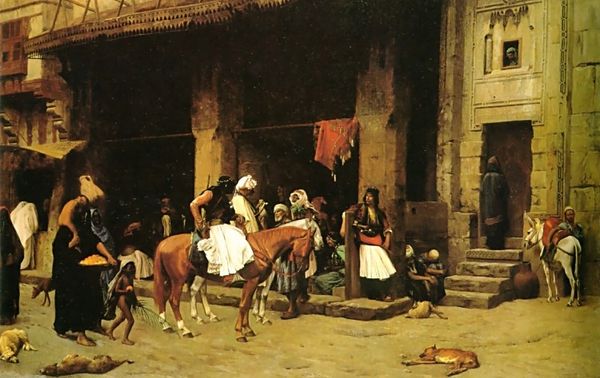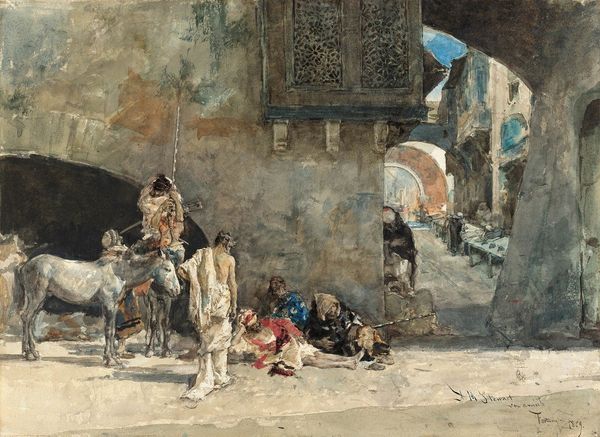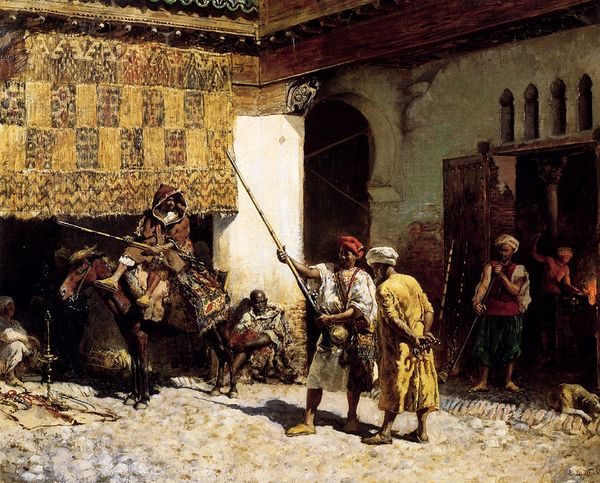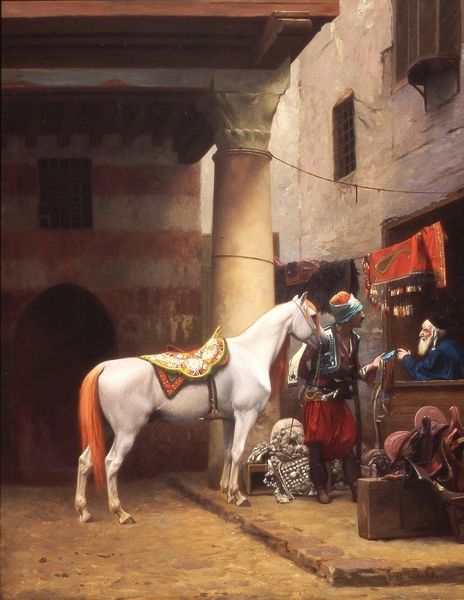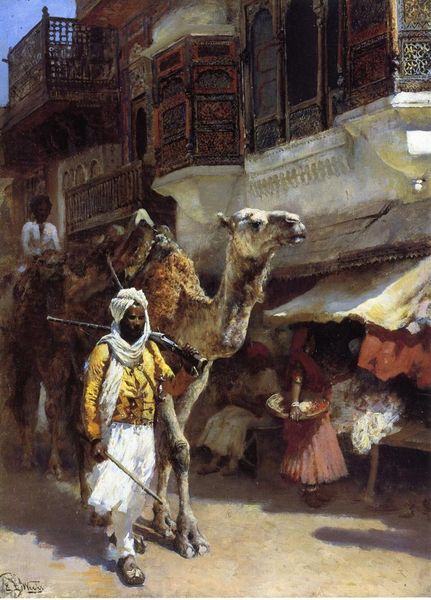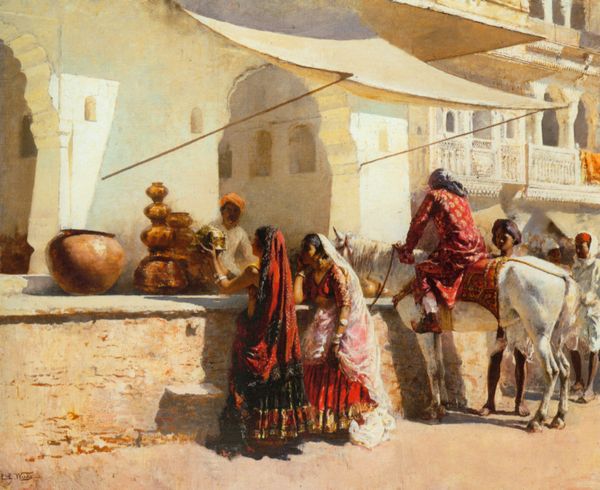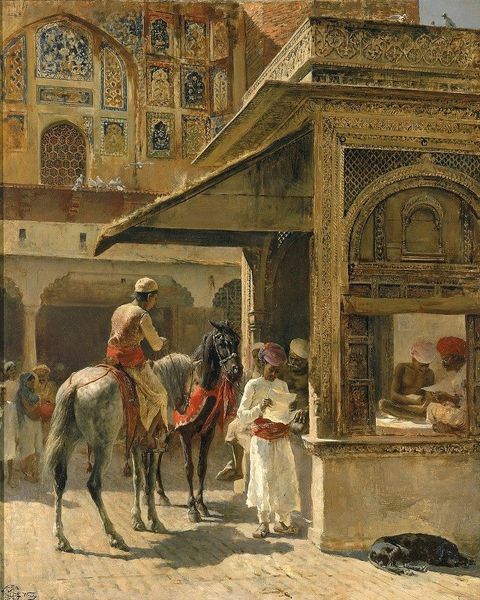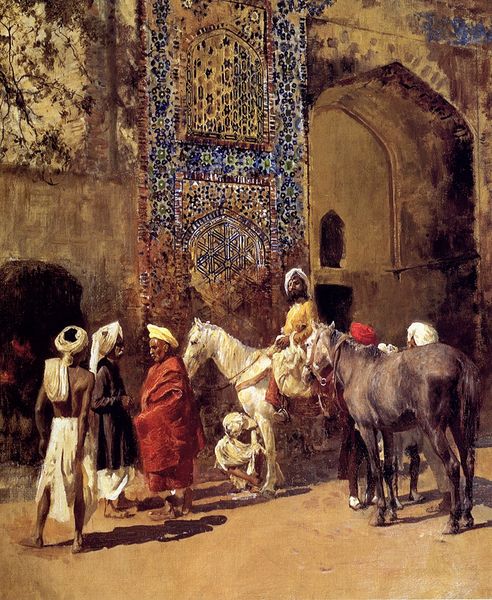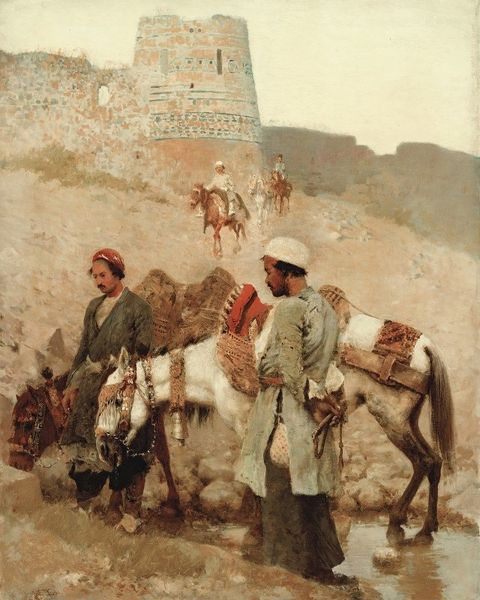
Craftsman Selling Cases By A Teak Wood Building, Ahmedabad 1885
0:00
0:00
edwinlordweeks
Private Collection
painting, oil-paint
#
surveyor photography
#
painting
#
building site documentary shot
#
oil-paint
#
asian-art
#
urban life
#
orientalism
#
street photography
#
cityscape
#
genre-painting
#
realism
Dimensions: 99.7 x 73 cm
Copyright: Public domain
Curator: This is Edwin Lord Weeks's oil painting, "Craftsman Selling Cases By A Teak Wood Building, Ahmedabad", painted in 1885. It offers a view of everyday life in India during the late 19th century. Editor: My first impression? Intricate. A world of details layered upon details, from the architecture to the clothing, it’s almost dizzying but in a really compelling way. Curator: Weeks, an American Orientalist painter, clearly had a fascination with the architectural styles and local customs he encountered during his travels. Notice how the light falls on the ornate teak building, emphasizing the depth and complexity of the carvings. That architectural style itself functions almost as a visual metaphor, showcasing cultural memory. Editor: Absolutely, the building looms large—a silent, ornamented witness. But I’m drawn to the interaction between the figures. There’s this beautiful exchange happening: goods being exchanged, perhaps stories too. Is it a snapshot, or something deeper? Curator: It is about intercultural exchanges, not only economic, but also symbolic. Weeks seems interested in capturing a sense of place but also these brief encounters. Observe the cases themselves. Do you see symbolic content within what they contain? Editor: Hmmm, the cases... They look almost like little treasure chests. Which gets me thinking, what do we truly value? And what do we choose to carry forward with us? I’m also curious: what do you read in the relationship between the standing figure in red and the men kneeling? Curator: Well, that very pose of kneeling is laden with symbolism; it is more of respect and status than a trade relationship. We, as Western viewers, also inevitably decode this and imbue it with the history of Colonial India. That adds another layer of complexity. Editor: Right, this dance of perspective. As a viewer, I feel like an eavesdropper. It feels as though you might be a ghost in their world; yet, being a painter in that setting makes you a defacto witness. Weeks, then, is acting as a mirror between worlds. Curator: Indeed, but mirrors reflect with inevitable selectivity, and in this mirror we confront the dynamics of observation, interpretation, and the enduring appeal of cross-cultural narrative. It serves as a moment captured. Editor: Okay, this painting did more than show me an image; it actually opened this treasure box of thought about our ways of viewing one another. Curator: Precisely. The work encourages us to not only gaze upon a different time and place, but also contemplate our own place in a global narrative—then and now.
Comments
No comments
Be the first to comment and join the conversation on the ultimate creative platform.
